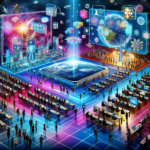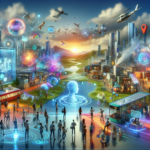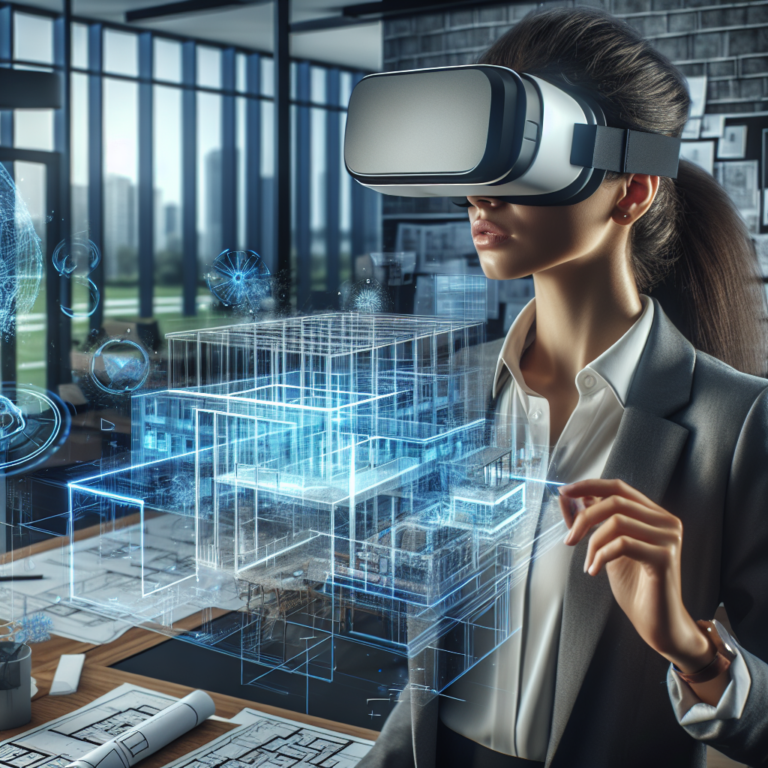Transforming Architectural Dreams: The Role of Immersive Technologies in Design
Understanding Immersive Technologies in Architecture
In an era where technology meets creativity, immersive technologies are redefining the landscape of architecture. From virtual reality (VR) to augmented reality (AR) and beyond, architects and designers are leveraging these powerful tools to take projects from abstract concept to stunning completion. How do these technologies enhance the architectural process? Let’s delve into their transformative impact!
The Spectrum of Immersive Technologies
Immersive technologies consist of a variety of digital tools that create engaging, interactive experiences for users. In architecture, the most prominent tools include:
- Virtual Reality (VR): Creates a completely immersive environment where users can explore architectural designs in a 3D space.
- Augmented Reality (AR): Overlays digital information onto the real world, allowing architects to visualize how designs can integrate with existing environments.
- Mixed Reality (MR): Combines the physical and digital worlds, enabling interactive experiences that enhance design collaboration.
- BIM (Building Information Modeling): An advanced modeling process that integrates various aspects of building design into a cohesive virtual representation.
Enhancing the Design Process
Embracing immersive technologies allows architects to streamline the design process significantly. Here are some standout ways these tools enhance workflows:
1. Improved Visualization
Traditionally, architects relied on 2D drawings and static models. With VR and AR, they can create realistic simulations that enhance visualization. Clients can walk through virtual spaces, experiencing layouts, materials, and light in a lifelike manner, fostering a deeper understanding of the project.
2. Enhanced Collaboration
Immersive technologies greatly improve collaboration among architects, clients, and stakeholders. Mixed Reality allows multiple users to interact with a design simultaneously, regardless of location. This collaborative environment encourages real-time feedback and decision-making, leading to more refined and successful outcomes.
3. User-Centered Design
Using immersive technologies, architects can engage end-users in the design process. By utilizing VR experiences during design consultations, clients can express their preferences and suggestions effectively, allowing architects to create spaces that truly resonate with the intended users.
From Concept to Completion
Immersive technologies not only enhance the design phase but also play a crucial role in the entire lifecycle of a project. Here’s a step-by-step journey through how these technologies facilitate the process:
1. Conceptualization Stage
At the conceptualization phase, architects can use 3D modeling software in conjunction with VR to create initial design concepts quickly. These virtual models can be easily modified and edited, allowing for limitless creativity without the constraints of traditional methods.
2. Client Presentations
During presentations, clients can don VR headsets to immerse themselves in the design. This engaging experience makes it easier for clients to understand proposals visually. The feedback session becomes more intuitive, paving the way for productive discussions about modifications and enhancements.
3. Design Development
As the design evolves, architects can utilize AR to overlay design elements onto real-world sites. This integration allows them to assess spatial relationships and site conditions accurately, ensuring the design fits harmoniously within its context.
4. Construction Phase
Once the design is finalized, immersive technologies continue to play a vital role. BIM not only aids in construction planning but also enhances communication among contractors, engineers, and architects, reducing the risk of misinterpretation and errors. AR can facilitate on-site reviews by visualizing construction plans overlaid on the physical structure, ensuring execution aligns with design intent.
5. Post-Completion User Experience
Even after a project is completed, immersive technologies can provide valuable insights. By utilizing VR tours, architects can gather feedback from users and analyze how the space is being used. This data can inform future projects and improvements, demonstrating a commitment to continuous enhancement.
Challenges and Considerations
While the benefits of immersive technologies in architecture are substantial, it’s important to consider associated challenges:
- Cost Implications: High-quality immersive solutions can be expensive to implement, particularly for small firms.
- Learning Curve: Training staff to use advanced technologies can require time and resources.
- Client Adaptation: Some clients may be hesitant or become overwhelmed by new technologies, making it essential to offer guidance and support.
Future Prospects
The architectural field is continually evolving, and the integration of immersive technologies seems poised to expand further. As advancements march on, we can expect:
- Increased affordability of technology.
- Enhanced tools for greater user engagement and design interactivity.
- Broader applications across various domains, including urban planning and landscape architecture.
Ultimately, immersive technologies herald a new chapter in architecture, where creativity and innovation converge, paving the way for revolutionary designs and transformative built environments. As professionals embrace these tools, they will continue to redefine what is possible in architectural design and construction, inspiring a new generation of architects to dream bigger and bolder. 🌟




0 Comments